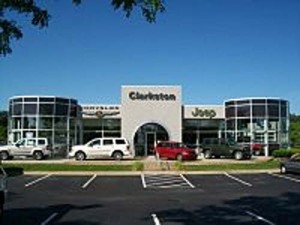A new report is harshly critical of the Obama Administration’s efforts to have General Motors and Chrysler sharply cull their distribution networks as part of their bankruptcy reorganization plans, last year.
Together, the two troubled companies agreed to shed thousands of retail outlets across the country – something corporate managers had actually long wanted to do – in order to receive billions of dollars in bailout funds GM and Chrysler needed to survive.
But the White House’s automotive overseers failed to consider the potential impact such dealer cuts would have both on individual jobs and on the communities that the targeted retailers serve says the report, released by the inspector general for the Troubled Asset Relief Program. Also known as TARP, the program was initially created under the Bush Administration to help save the nation’s faltering banking industry. It was later tapped by the Obama Administration to salvage GM and Chrysler.
“Job losses at terminated dealerships were apparently not a substantial factor in the Auto Team’s consideration of the dealership termination issue,” declared the audit of the $787 billion TARP program prepared by auditor Neil Barofsky. But, it continued, “The fact that Treasury was acting in part as an investor in GM and Chrysler does not insulate Treasury from its responsibility to the broader economy.”
Emerging from Chapter 11 protection, Chrysler immediately began terminating 789 of its dealers. General Motors announced it would give targeted retailers a bit more time to phase out their operations, with a total of 1,454 expected to close by October of this year.
The news triggered an avalanche of resistance, both from dealers and from Capitol Hill, where automotive retailers and their trade groups, like the National Automobile Dealers Association, are among the country’s most formidable lobbyists. After months of debate, lawmakers passed a measure allowing targeted dealers to take their claims into arbitration if they wanted to maintain their franchises.
In March, GM raised something of a white flag, announcing it would immediately reinstate 661 of its retailers and internally examine whether hundreds of others would be retained – even before the arbitration process began.
“We are eager to restore relationships with our dealers, and get back to doing what we do best – selling cars and taking care of customers,” Mark Reuss, President, GM North America, said at the time.
Though Chrysler was initially more resistant to reinstating dealers, it has also backpedaled on its original target.
The new report from the TARP auditor carried a caveat from Treasury officials, noting that “deep and painful” cuts had to be made by all those involved in the rescue of GM and Chrysler. Indeed, lenders and investors lost tens of billions of dollars on the bankruptcies. Supporters also note that had the White House not come to the rescue of the two companies the job losses would have been substantially higher.
But critics used the report to fire a salve at the White House. The findings “should serve as a wake-up call as to the political implications of politically-orchestrated bailouts,” declared ranking Republican Congressman Darrell Issa. Such comments, of course, could be seen as accusations against both the Obama and Bush administrations, both of which actively pumped money into the private sector as the U.S. economy threatened to collapse in late 2008 and into 2009.
It was only after Chrysler had already gone into bankruptcy and announced plans to cut its distribution network that auto task force officials began to calculate the impact on jobs. The elimination of more than 2,000 GM and Chrysler retailers, they forecast, would trigger the loss of 43,081 dealership jobs in the short-term, though with other showrooms likely picking up the slack, the long-term job loss was projected to be a less substantial 25,997.
The U.S. Bureau of Labor Statistics now reports that the actual total is 35,300 jobs, or 3.3% of the nation’s dealer showroom and service bay workforce.


And now that we have discovered this little problem, we are going to go back and do what? I live in Northern New Jersey. I have seen literally dozens of dealerships withing 50 miles of here which have closed during the last 2 years, many of whom had their franchises pulled. What are they supposed to do? Once you have closed your dealership for a year or so, people go somewhere else. You will never get your best employees back. Your best customers have moved on. And you are sitting there with a piece of realestate and a memory…
That is the problem with haveing 20/20 hindsight. It is just too late.
How many jobs would have been lost if GM & Chrysler were allowed to go out of business?…Millions.
Why is this Bush-appointed TARP Watchdog carping about 100k jobs lost in order to save millions, when Bush’ free trade policies closed down or offshored 7 – 10,000,000 US manufacturing, IT, banking, admin, service jobs between 2001 & 2009 and tripled US Trade Gap? ?